Architecture is a mixture of form and function, just like fashion. Clothes are supposed to be comfortable and beautiful at the same time but its design can easily turn out to be a vague ornament in some ocasions. However, some of the biggest world firms such as Chanel, Armani or Louis Vuitton are known for enhancing the human beauty that we already have rather than being a “decorative” element of our body.
This type of program, fashion retail, is very interesting because it reaches a point where function becomes form and vice versa. If the aim of a store is to transmit beauty, to express class and to sell, its function very much depends on its form. Therefore, fashion architecture is the most plastic kind of architecture, getting close to the limits of art and even sculpture.
Here you have a very particular collection of stores. Would you love to shop here?
If you liked this, don’t miss 17 Architecturally Amazing Spas in Europe



1. Louis Vuitton Osaka
Location: Osaka (Japan)
Architect: Jun Aoki
Year: 2020
Description: The Louis Vuitton Maison Osaka Midosuji has just opened to the public. As a result of a close collaboration between architects Jun Aoki and Peter Marino, the four-floor luxury store is a reflection of the city’s international travel hub status. Inspired by Osaka’s history as a sea-faring city, Jun Aoki “imagined a light and airy white structure inspired by the traditional Higaki-Kaisen cargo ship and its billowing sails”. With metal frameworks motifs used on the ground level, the project seems to float on water. Utilizing natural light, the retail store “breathes the city’s energy, while offering clients a sense of calm and respite”. Read more here.
2. Art Deco Project
Location: Miami (USA)
Architect: Aranda Lasch
Year: 2015
Description: Located in the city’s new Design District, the building houses Tom Ford, Lanvin, and Omega stores. Miami’s historic architecture is defined by the Art Deco movement from the 1920s to the 1940s where bold geometric motifs shape the city’s landmarks. Inspired by the pleated Art Deco patterns found in its architecture and fashion, the building is given a texture that seeks to revisit the exuberance and ornament of Miami’s golden era. Read more here.
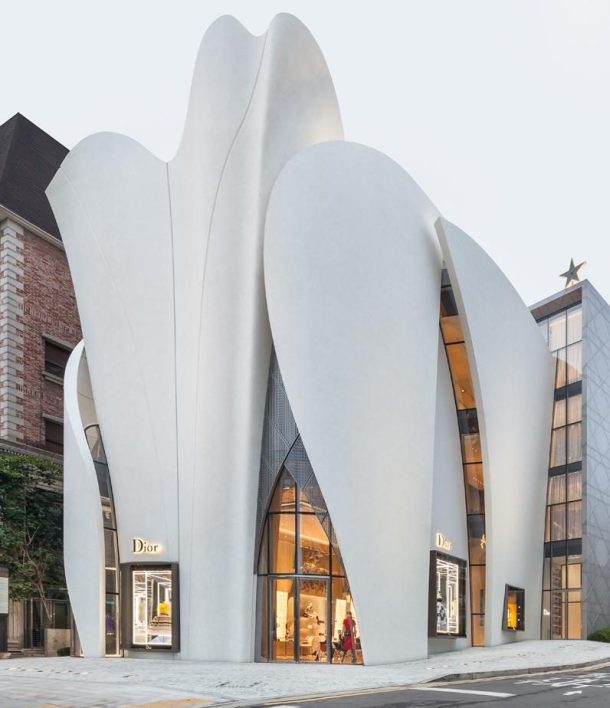

 3. Dior
3. Dior
Location: Seoul (South Korea)
Architect: Christian de Portzamparc
Year: 2015
Description: In Seoul, where the quadrangular buildings align with the avenue, and which are all occupied by leading international fashion labels, the building stands out like a large sculptural tribute to Dior, inviting everyone to step inside. The entrance, where two shells come together, is a sort of modern lancet arch, in which two metal mesh surfaces cross in line with the clothing metaphor. Once inside, the customer makes a succession of discoveries – a feature typical of the interiors designed by Peter Marino. Read more here.
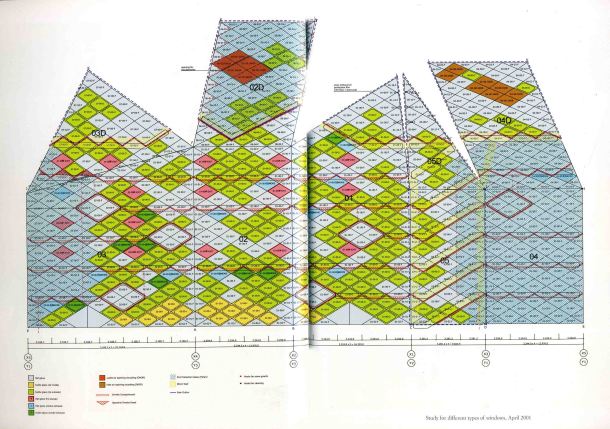 4. Prada Aoyama
4. Prada Aoyama
Location: Tokyo (Japan)
Architect: Herzog & deMeuron
Year: 2003
Description: The shape of the building is substantially influenced by the angle of incidence of the local profile. Depending on where the viewer is standing, the body of the building will look more like a crystal or like an archaic type of building with a saddle roof. Read more here.
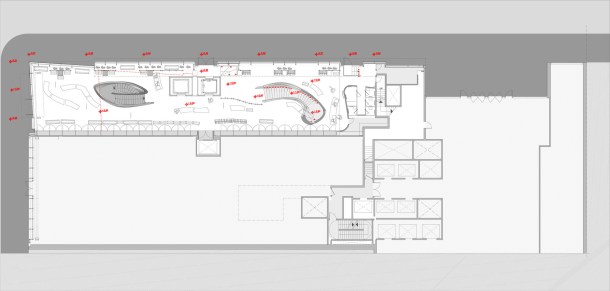 5. Armani Store
5. Armani Store
Location: New York (US)
Architect: FUKSAS
Year: 2009
Description: The nucleus of the project is the staircase that connects the floors. It’s an element completely indipendent that can be assimilated with difficulty to a simple geometric figure, that originates a whirlwind with a great dymanism, and around of it there are the different levels that receive the Armani’s world. Read more here.

6. Hermès Store
Location: Amsterdam (The Netherlands)
Architect: MVRDV
Year: 2016
Description: P.C. Hooftstraat, a delightful little street dating mostly to the 19th century, is nowadays known for its high-end flagship stores. In 2016, MVRDV was appointed to revamp this brick block and the result couldn’t be more thoughtful. Using hundreds of specially-engineered glass bricks and a transparent high-strength sealant, the façade was made more permeable whilst still mimicking the original building design and evoking the vernacular aspects of the area. When Hermès moved in earlier in 2019, they further enhanced the space removing a blank wall from behind the upper half of the facade (making the interior entirely visible from the outside) and adding special brand culture touches (like the delicate leather handrails of the main staircase). Read more here.


 7. Louis Vuitton Marina Bay Sands
7. Louis Vuitton Marina Bay Sands
Location: Marina Bay Sands (Singapore)
Architect: Moshde Safdie Architects
Year: 2012
Description: The radical design for a stand alone store has become the first of it’s kind, an “Island Maison”. Louis Vuitton is a world renowned brand know for it’s commitment to fashion, lifestyle, culture, Art + Architecture. It’s not surprising that an innovative concept was envisioned for their South East Asian flagship store. Read more here.
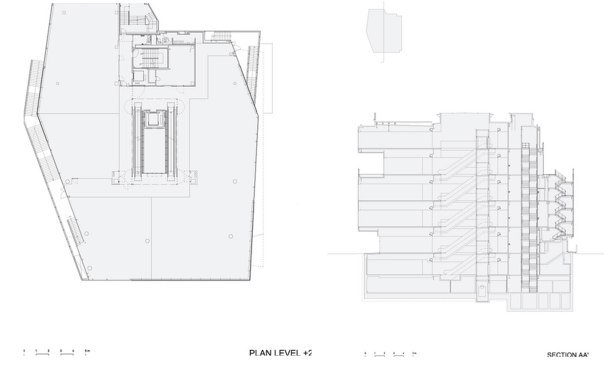
8. Gyre Shopping Center
Location: Tokyo (Japan)
Architect: MVRDV
Year: 2007
Description: Spectacular design of a box-shaped building, with a magnificent façade and 7 floors. By gradually twisting these floors around a central core, a series of terraces emerge, connected by stairs and elevators that are positioned outside the volumes. Read more here.
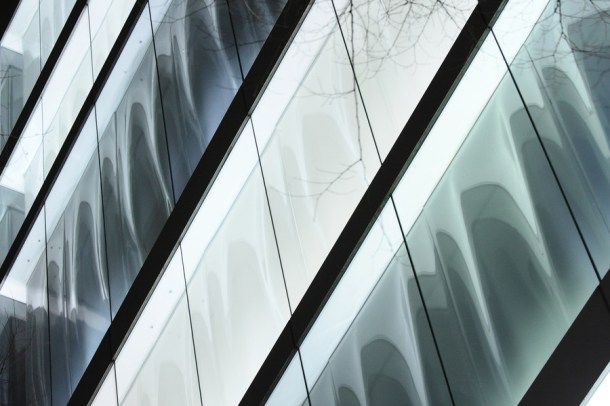 9. Christian Dior
9. Christian Dior
Location: Tokyo (Japan)
Architect: SANAA
Year: 2004
Description: While the box itself is unexciting – though modulated by some variety in floor height, articulated by the bands around the building – the building’s showpiece is its skin. The clean, square, outer skin of clear glass covers a second skin inside, of translucent acrylic. This gives the external facade the gentlest of hints at what is inside (while revealing nothing), and provides a glowing blank canvas for seasonal additions. Read more here.
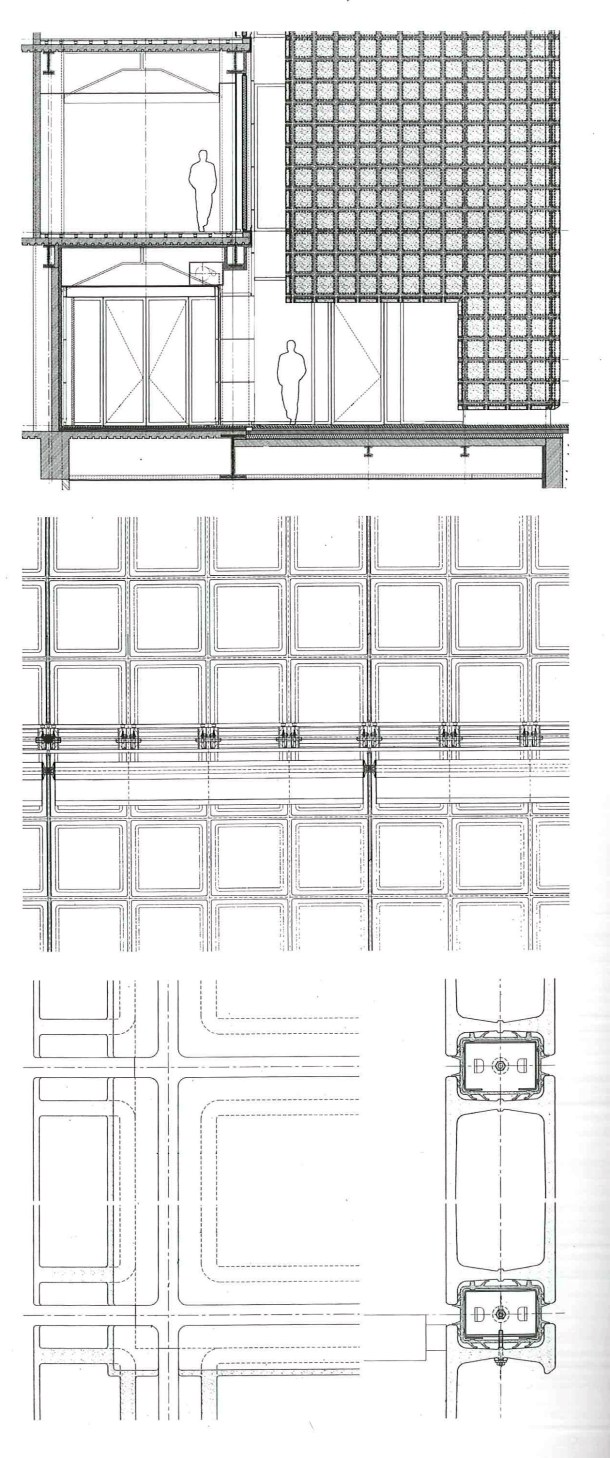 10. Maison Hermès
10. Maison Hermès
Location: Tokyo (Japan)
Architect: Renzo Piano
Year: 2006
Description: The small tower is entirely wrapped in 13,000 bespoke, 450mm square glass blocks, with special curved blocks on the corners. At night the building resembles a giant glowing Japanese lantern. Every element of the building was designed to withstand earthquakes and absorb seismic shockwaves. The building contains a shop, offices, an exhibition space and access to the underground station below Harumi Avenue. Read more here.
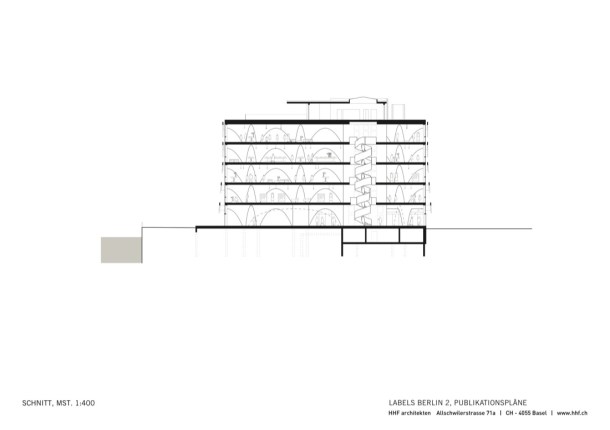 11. Labels 2
11. Labels 2
Location: Berlin (Germany)
Architect: HHF Architects
Year: 2010
Description: Conceived to provide showroom space for approximately thirty different international fashion labels. The design concept responds to the architecture of the adjacent building. The interior spaces of this historical building are strongly characterized by the repetition of arched windows used in the façade. Read more here.
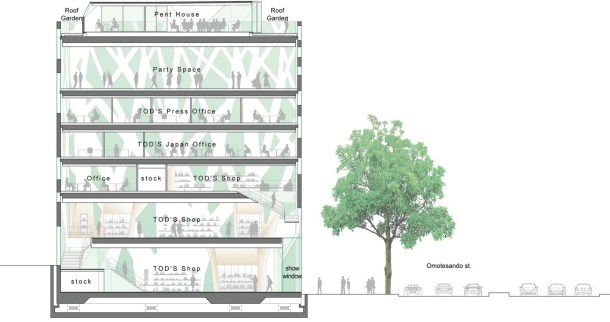 12. TOD’S
12. TOD’S
Location: Tokyo (Japan)
Architect: Toyo Ito
Year: 2004
Description: The seven-storey building continues Ito’s exploration of ideas of surface, the dramatic structure mimicking the shapes of the tall elm trees that stretch along Omotesando Avenue and reinterprets them in its façade as a series of crisscrossing geometric forms. The façade is a smooth blend of concrete and glass and materials are kept simple. Read more here.




13. Valentino Store
Location: New York (US)
Architect: David Chipperfield
Year: 2014
Description: Fashion house Valentino’s New York flagship store is designed with a grey Terrazzo interior. A new eight-storey facade has been added to the Postmodern building, originally designed by architects John Burgee and Philip Johnson. The black steel and aluminium elements are designed to echo Mies van der Rohe’s nearby Seagram Building. The lower levels contain the store and are clad with vertical brass bars and incorporate a lantern, a clock and the brand’s logo in the same material. Read more here.

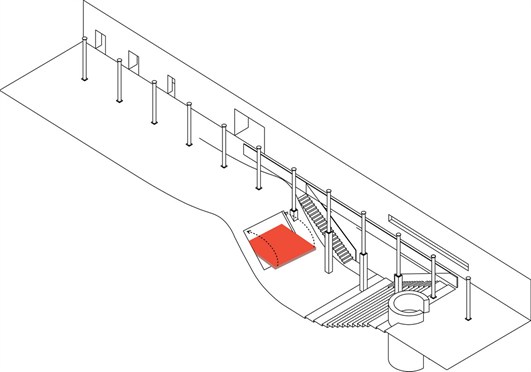 14. Prada Epicenter
14. Prada Epicenter
Location: New York (US)
Architect: Rem Koolhas- OMA
Year: 2001
Description: New York’s Prada Epicenter – an exclusive boutique, a public space, a gallery, a performance space, a laboratory – is part of OMA / AMO’s ongoing research into shopping, arguably the last remaining form of public activity, and a strategy to counteract and destabilize any received notion of what Prada is, does, or will become. Read more here.


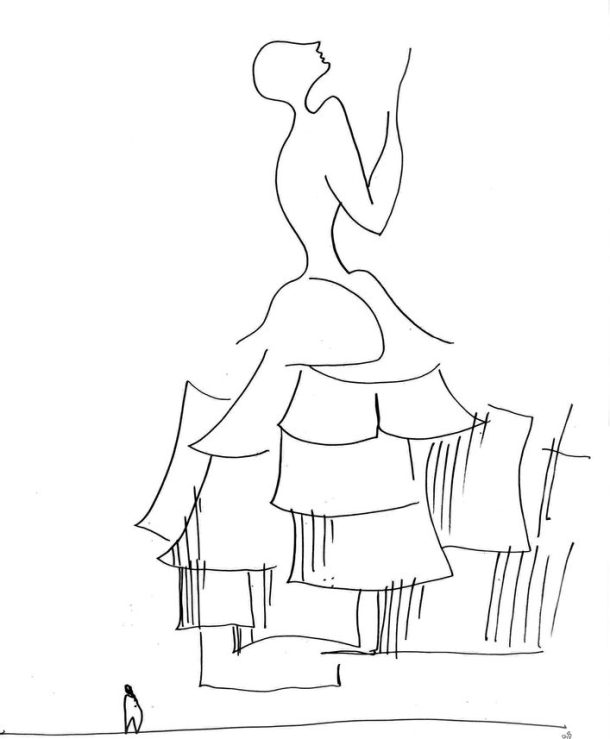 15. Dior
15. Dior
Location: Miami (US)
Architect: Barbaritobancel Architectes
Year: 2016
Description: Haute Couture and Architecture can meet around these values. Architecture transcends fashions and its image needs to outlive time that goes by and continue to represent de Dior spirit in a lasting manner. Through large curved movements of white concrete, clear figures of the ‘plissée’ take shape, between which the spaces of the boutique slide in. The nobility of the smooth and delicate surfaces is given by a contemporary material made of ultra high-density concrete and by marble powder. Read more here.
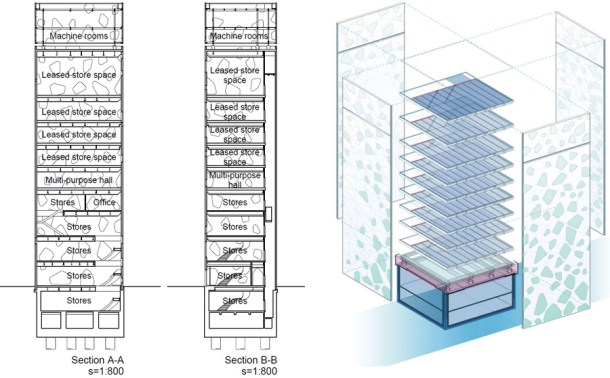
16. Mikimoto Ginza
Location: Tokyo (Japan)
Architect: Toyo Ito
Year: 2005
Description: Ginza, literally means “place of silver” and has been a commercial district of Tokyo. The building of apparent simplicity comprises a prism perforated by a series of irregular windows. The concept is based on the building is held by its facade, leaving the internal spaces column-free. Read more here.
 17. Puma City
17. Puma City
Location: Multiple Global Ports
Architect: LOT EK Architecture and design
Year: 2008
Description: Twenty-four shipping containers are retrofitted and transformed into PUMA City, a transportable retail and event building. The building was assembled and disassembled a number of times at several different international ports. PUMA City is conceived as a three level stack of containers, shifted to create internal outdoor spaces, large overhangs and terraces. Read more here.



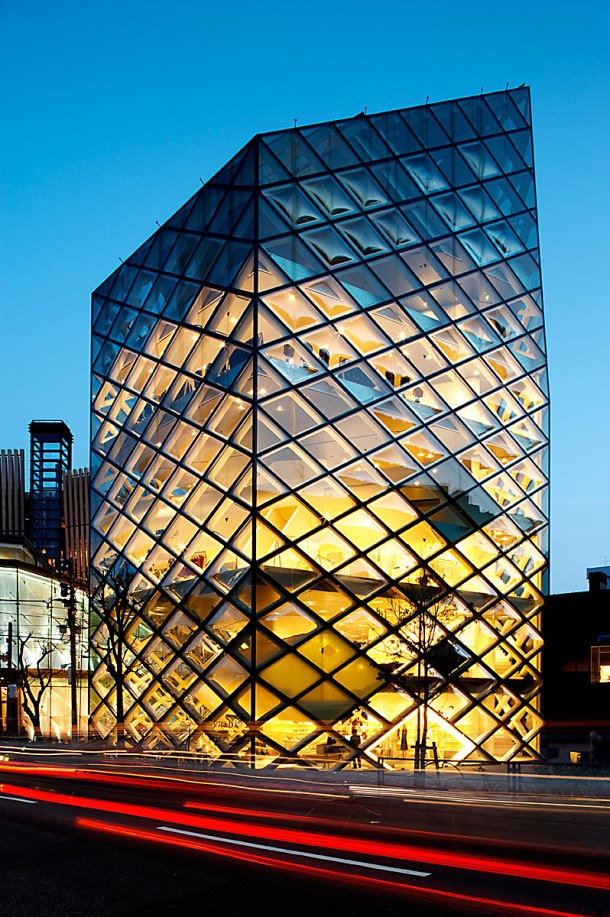
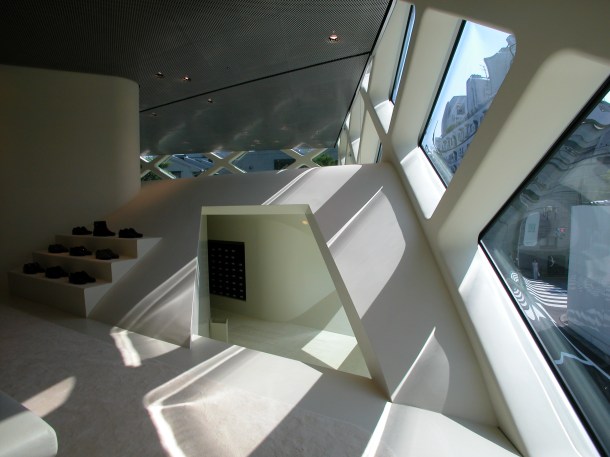
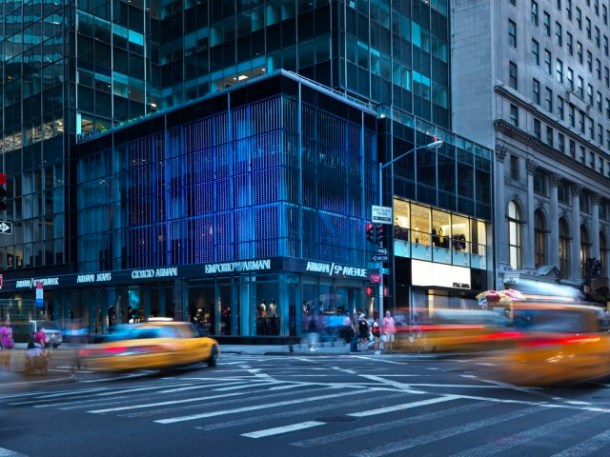
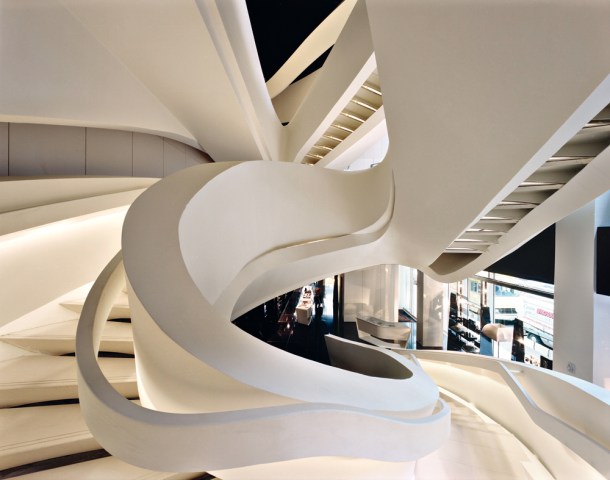
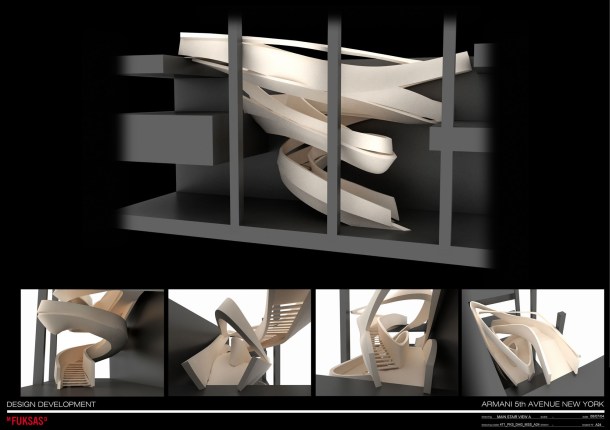

 ©
© 


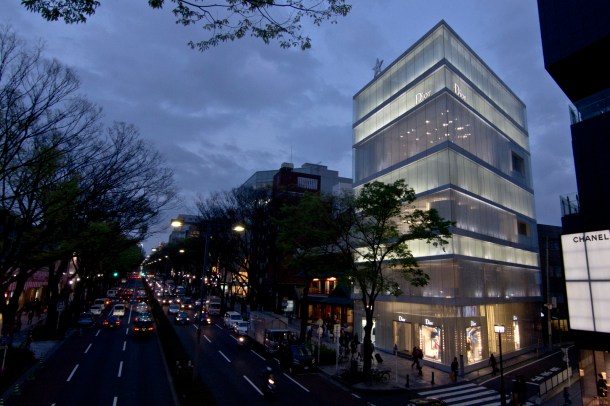
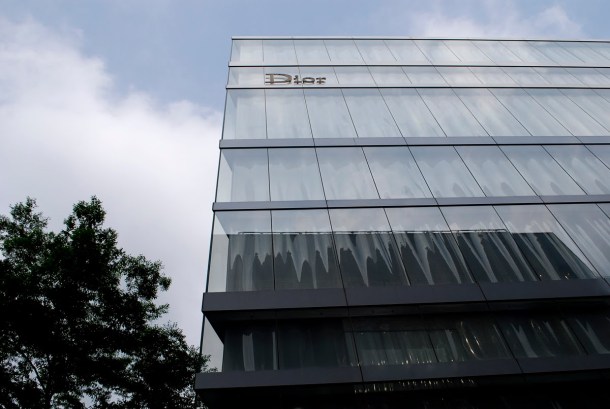
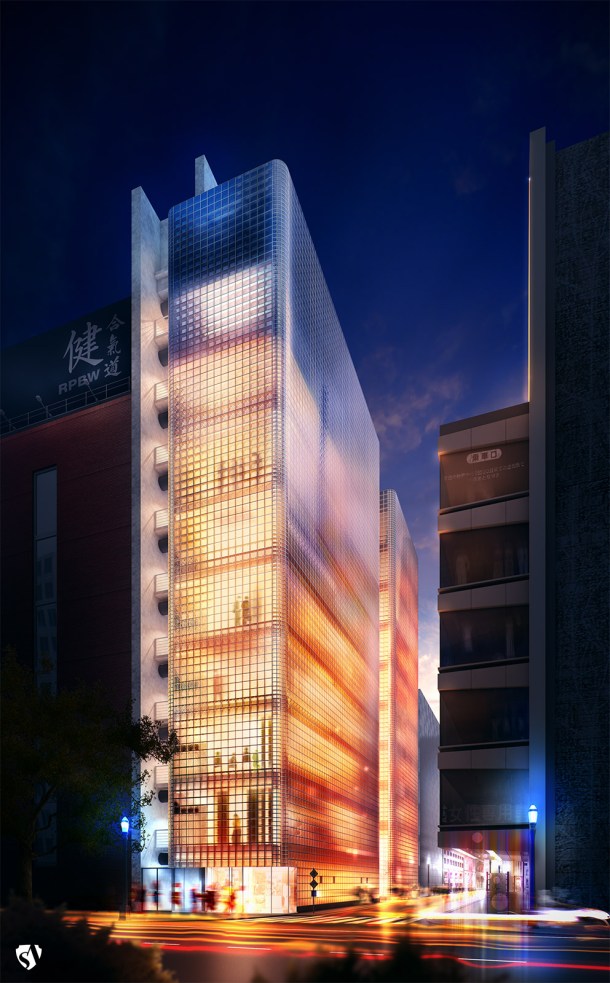
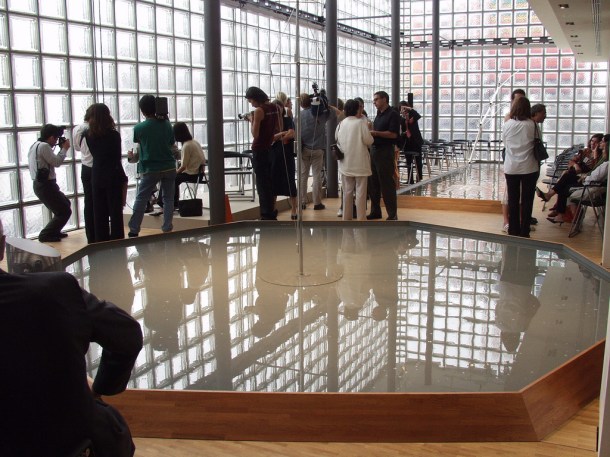
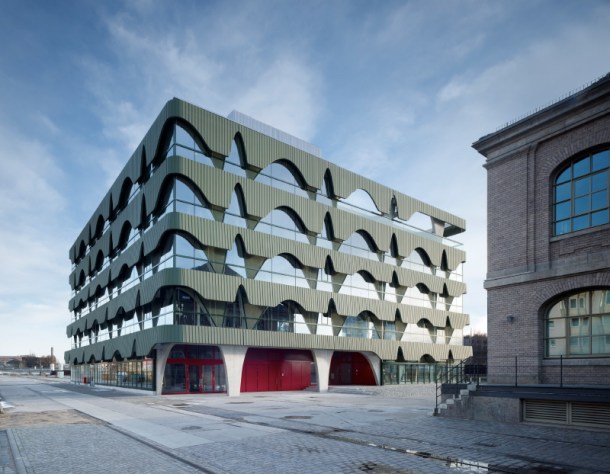
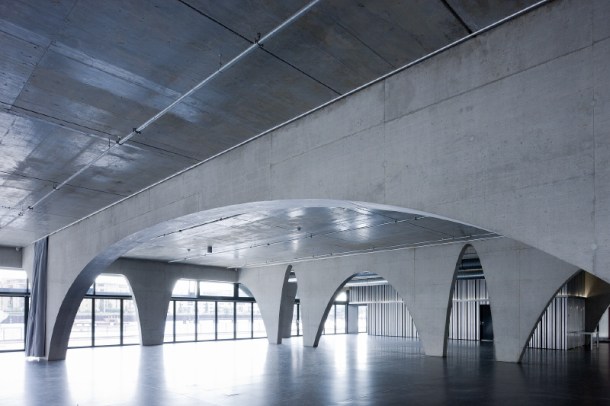
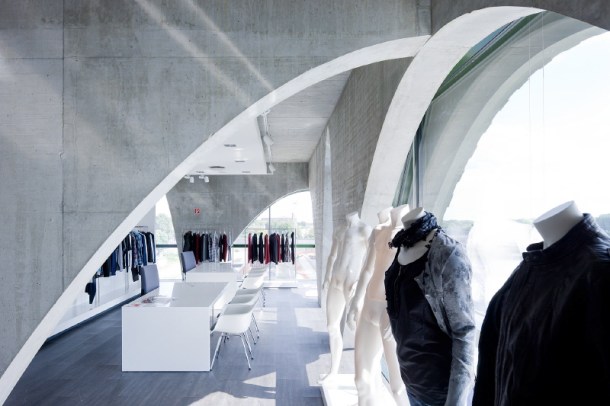


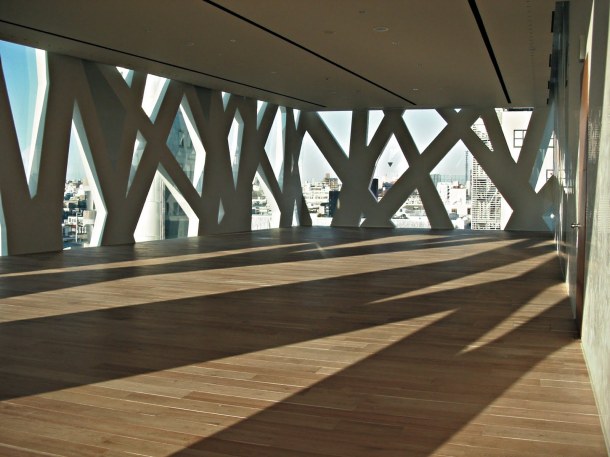

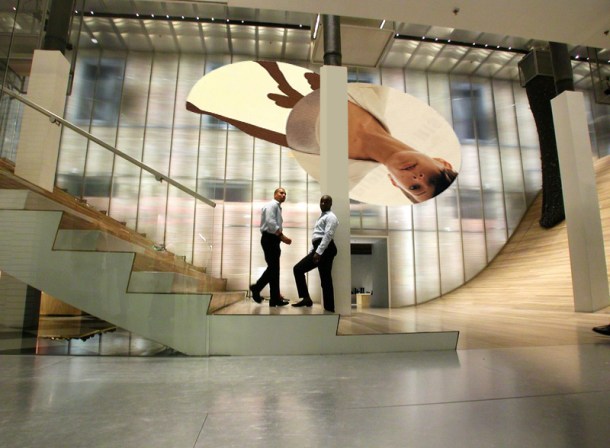
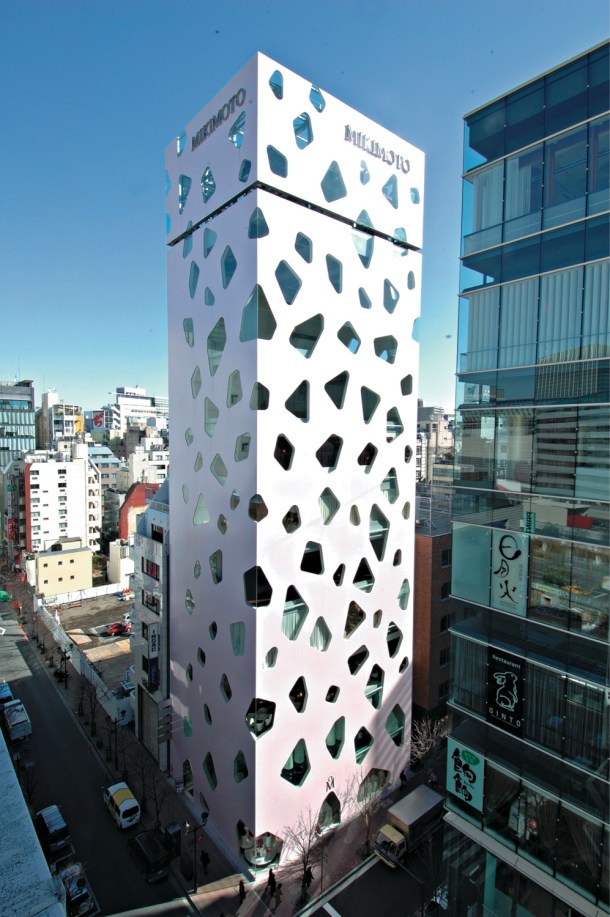
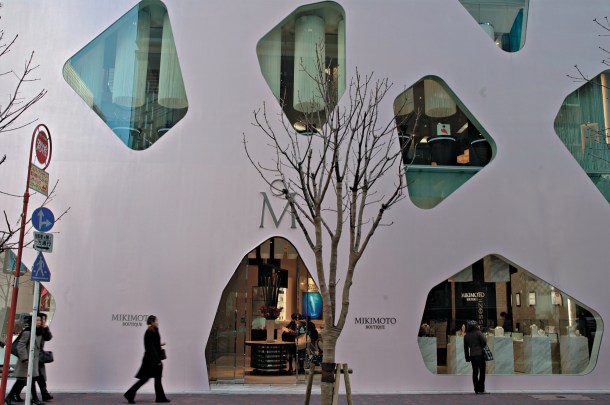
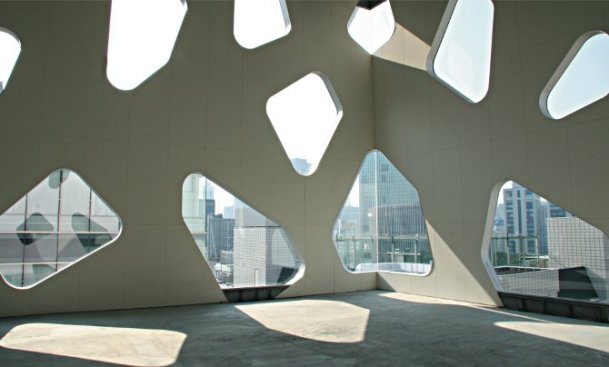




Amazing architecture. I think I prefer the smaller more compact spaces. The others are almost cathedrals for a few fashion pieces. I am not sure if the items warrant so much space!
LikeLike
I very much agree with your comparison. Some of them have offices, cafes and other spaces but it’s true that shoes and clothes can’t take up so much space. Maybe I say this because I’ve never shopped in any of these. I’ve been in some of this list but just to experience the space and take pictures. The Armani store in New York was just amazing 😀
LikeLike
Some of them seem to have other uses as galleries so that makes sense and it’s good that someone is thinking about and building beautiful buildings.
LikeLike
This is amazing! I’ve seen some interesting architecture but nothing like some of these structures!
LikeLike
Thanks Isaiah, it’s always fascinating to see architecture around the world. Which one was your favourite?
LikeLike
I’d probably have to go with the Armani Store or Puma City. Unlike anything I’ve seen before, they are all amazing though. Definitely makes it hard to narrow it down.
LikeLike
Good choice! I’ve been in the Armani store and it was just amazing. And I love the concept of PUMA city, the last one. I think I would enjoy shopping in those containers 😀
On the other hand, the Prada store must be a lot of fun when music or performances are going on inside.
LikeLike
The clothes definitely come second to the architecture in most of these! 🙂
LikeLike
I 100% agree 😀
LikeLike
Very interesting post. The Christian Dior store in Tokyo is my favourite one, amazing!
LikeLike
The new facade was indeed a smart move. I haven’t been there but from the pictures it looks amazing! Did you get the chance to visit it in person?
LikeLike
Me neither, I’ve never been there even if I’ve been in Tokyo. I’ve read some comments on focused press though and it’s amazing.
LikeLike
Oh! If you get the chance to visit Tokyo again don’t miss the building and take some pictures for us. It would be great to see the perspective of a customer!
LikeLike
Of course! 😉
LikeLike
Impressive post.The architect of any culture reflects the civilization of the age.jalal
LikeLike
Thanks, Jalal. I couldn’t agree more, that’s why some cities have more of these and others less.
LikeLike
Pingback: 17 Architecturally Amazing Fashion Stores | simlievler
Wow! Super cool and stylish architecture, thanks for sharing! Here’s a fun way to keep track of amazing architecture on the web http://bit.ly/1aD9hQ3 and follow the latest fashion trends http://bit.ly/17JDtPj
LikeLike
Reblogueó esto en The Retailing Trendsy comentado:
Increibles los edificios, el interiorismo, la defiiniciòn de espacios…
La arquitectura al servicio de la moda.
Impresionante post de VIrginia Duran.
LikeLike
Bravo! I don’t get tired of telling you how great work you do with your posts 🙂
LikeLike
Thanks 😉
LikeLike
Wow! 🙂
LikeLike
Thanks for stopping by 🙂
LikeLike
Nice blog. I love all Architecture and find something beautiful in all buildings , they all have there own personality. I always try to capture that in my photography . This blog is one to follow!
LikeLike
Mark, thanks for your kind words! As an architect I am passionate about buildings and photography and I am happy to share this passion in this blog. You’re most than welcome 🙂
LikeLike
Reblogged this on digger666.
LikeLike
Can’t decide which one is my favourite. It’s crazy to think that most of them are either in Tokyo or New York.
LikeLike
Good morning Aroha! It wasn’t surprising that many of these are either in NY or Tokyo since they are major fashion cities. It’s difficult to choose right? 😀
Have you visited some of this stores?
LikeLike
Pingback: 11 Examples of Art and Architecture in Fashion | Virginia Duran
Blog super intéressant sur l’architecture.
LikeLike
merci 🙂 Quelle est ton magasin préféré?
LikeLike
Il n’y en a pas un précis mais plusieurs .
LikeLike
Moi, Je ne pouvais pas choisir un seulement 😉
LikeLike
J’aime l’architecture qui sort du basic cube traditionnel et simpliste .
LikeLike
J’étais en train de regarder ce projet à Tokyo. Qu’est-ce que tu en penses? http://bit.ly/1lW6E4h
LikeLike
Je connais. Pour moi cela n’est plus de l’architecture d’habitation , le style machines à laver empilées pour logement je n’aime pas. Les SPA ont les mêmes cages. Je suis pour l’espace, les volumes .. J’aime le beau , le créatif associé au fonctionnel.
LikeLike
Hello i am kavin, its my first time to commenting anywhere, when i
read this paragraph i thought i could also create comment due to this good piece of writing.
LikeLike
Pingback: 플래그십 스토어, 제2의 전성시대 | All that All
Pingback: 17 Architecturally Amazing Museums | Virginia Duran
Reblogged this on Design4life Blog.
LikeLike
Pingback: 17 Architecturally Amazing Fashion Stores | Design4life Blog
Pingback: 17 Architecturally Amazing Wineries | Virginia Duran Blog